Instruction
5 Easy Ways To Cut Strokes Next Round

In this article, we will take a look at five easy ways to cut strokes from your next round. The nice thing about these suggestions is that they require no swing changes and can be implemented immediately.
No. 1: Make Aim and Setup Routine
Golf is a target sport, so we must be able to set up at our intended landing area. The first thing to realize is that the teeing ground is not there to aim you correctly. In many cases, it is just the opposite. The architect has laid out the angles in such a way to make alignment more challenging. How many times have you stood behind misaligned playing partners and watched as they hit a solid shot into the woods or hazards?
Setting up square to the angle of the tee box on this hole aims me 50 yards or more to the right side of the fairway.
Deliberate aim allows for a swing free from “steering” and compensations, as well as correct evaluation of a misdirected shot.
“Down the Line View” Address Routine
- Align the clubface at an intermediate target 12 inches in front of the ball.
- Step in with the right foot angled about 20 degrees inward with the ball positioned directly off your toe.
- Bring the left foot in parallel to the right foot with your toes in line and your feet about one clubhead width apart for irons (two fingers width apart for driver).
- Step out with the right foot for width and to square stance.
“Face On View” Address routine
- Step in with the right foot angled about 20 degrees inward with the ball positioned directly off of your toe.
- Bring the left foot in parallel to the right foot with your toes in line.
- Step out with the right foot for width and square up your stance.
No. 2 Know your yardage
With today’s technology, there is no excuse for not quickly being able to determine an accurate distance on your approach shots. Get the distance to the flag location and just as importantly, factor in an idea to the front edge of the green. If you are using a laser range finder and having trouble registering where the green starts, simply subtract 10-to-15 yards from the flag’s location.
No. 3: Take enough club on aproach shots
Take enough club so that even a slight miss hit will cover the yardage to the front of the green. If you are in between yardages, go with the longer club. If the wind is blowing even a little, take more club. I remember hearing Hal Sutton’s advice for approach shots, “Take enough club to reach the back of the green.” The game will become much more enjoyable when you stop coming up short on your approach shots.
Select enough club to take the water and bunkers short out of play. Factor in any wind as well.
No. 4: Pace off the distance of every putt
To save time, you can do this while walking up to mark your ball. Once you get used to assigning an exact length to your putts, you will quickly begin to improve your distance control. Developing baselines between stroke length and length of putt helps take the guess work out and leads to better feel.
No. 5: Swing Less Mechanical
Save the technical work for your practice sessions. If you like to play with a swing thought, keep it to one simple key. I suggest two practice swings while clipping the grass where your ball would be positioned, then stepping in and hitting your shot. Attempts at overly mechanical thoughts on the course usually lead to slow play and rounds that end up becoming “range sessions,” that is, hitting multiple balls and abandoning score.
There are plenty enough technical aspects listed in the previous four steps to keep even the busiest of minds occupied for 18 holes, but with a better score at the end of the day.
- LIKE7
- LEGIT2
- WOW1
- LOL1
- IDHT1
- FLOP3
- OB2
- SHANK1
Instruction
Clement: Laid-off or perfect fade? Across-the-line or perfect draw?

Some call the image on the left laid off, but if you are hitting a fade, this could be a perfect backswing for it! Same for across the line for a draw! Stop racking your brain with perceived mistakes and simply match backswing to shot shape!
- LIKE0
- LEGIT0
- WOW0
- LOL0
- IDHT0
- FLOP0
- OB0
- SHANK1
Instruction
The Wedge Guy: The easiest-to-learn golf basic

My golf learning began with this simple fact – if you don’t have a fundamentally sound hold on the golf club, it is practically impossible for your body to execute a fundamentally sound golf swing. I’m still a big believer that the golf swing is much easier to execute if you begin with the proper hold on the club.
As you might imagine, I come into contact with hundreds of golfers of all skill levels. And it is very rare to see a good player with a bad hold on the golf club. There are some exceptions, for sure, but they are very few and very far between, and they typically have beat so many balls with their poor grip that they’ve found a way to work around it.
The reality of biophysics is that the body moves only in certain ways – and the particulars of the way you hold the golf club can totally prevent a sound swing motion that allows the club to release properly through the impact zone. The wonderful thing is that anyone can learn how to put a fundamentally sound hold on the golf club, and you can practice it anywhere your hands are not otherwise engaged, like watching TV or just sitting and relaxing.
Whether you prefer an overlap, interlock or full-finger (not baseball!) grip on the club, the same fundamentals apply. Here are the major grip faults I see most often, in the order of the frequency:
Mis-aligned hands
By this I mean that the palms of the two hands are not parallel to each other. Too many golfers have a weak left hand and strong right, or vice versa. The easiest way to learn how to hold the club with your palms aligned properly is to grip a plain wooden ruler or yardstick. It forces the hands to align properly and shows you how that feels. If you grip and re-grip a yardstick several times, then grip a club, you’ll see that the learning curve is almost immediate.
The position of the grip in the upper/left hand
I also observe many golfers who have the butt of the grip too far into the heel pad of the upper hand (the left hand for right-handed players). It’s amazing how much easier it is to release the club through the ball if even 1/4-1/2″ of the butt is beyond the left heel pad. Try this yourself to see what I mean. Swing the club freely with just your left hand and notice the difference in its release from when you hold it at the end of the grip, versus gripping down even a half inch.
To help you really understand how this works, go to the range and hit shots with your five-iron gripped down a full inch to make the club the same length as your seven-iron. You will probably see an amazing shot shape difference, and likely not see as much distance loss as you would expect.
Too much lower (right) hand on the club
It seems like almost all golfers of 8-10 handicap or higher have the club too far into the palm of the lower hand, because that feels “good” if you are trying to control the path of the clubhead to the ball. But the golf swing is not an effort to hit at the ball – it is a swing of the club. The proper hold on the club has the grip underneath the pad at the base of the fingers. This will likely feel “weak” to you — like you cannot control the club like that. EXACTLY. You should not be trying to control the club with your lower/master hand.
Gripping too tightly
Nearly all golfers hold the club too tightly, which tenses up the forearms and prevents a proper release of the club through impact. In order for the club to move back and through properly, you must feel that the club is controlled by the last three fingers of the upper hand, and the middle two fingers of the lower hand. If you engage your thumbs and forefingers in “holding” the club, the result will almost always be a grip that is too tight. Try this for yourself. Hold the club in your upper hand only, and squeeze firmly with just the last three fingers, with the forefinger and thumb off the club entirely. You have good control, but your forearms are not tense. Then begin to squeeze down with your thumb and forefinger and observe the tensing of the entire forearm. This is the way we are made, so the key to preventing tenseness in the arms is to hold the club very lightly with the “pinchers” — the thumbs and forefingers.
So, those are what I believe are the four fundamentals of a good grip. Anyone can learn them in their home or office very quickly. There is no easier way to improve your ball striking consistency and add distance than giving more attention to the way you hold the golf club.
More from the Wedge Guy
- The Wedge Guy: Golf mastery begins with your wedge game
- The Wedge Guy: Why golf is 20 times harder than brain surgery
- The Wedge Guy: Musings on the golf ball rollback
- LIKE88
- LEGIT13
- WOW6
- LOL1
- IDHT0
- FLOP4
- OB1
- SHANK8
Instruction
Clement: Stop ripping off your swing with this drill!

Not the dreaded headcover under the armpit drill! As if your body is defective and can’t function by itself! Have you seen how incredible the human machine is with all the incredible feats of agility all kinds of athletes are accomplishing? You think your body is so defective (the good Lord is laughing his head off at you) that it needs a headcover tucked under the armpit so you can swing like T-Rex?
- LIKE0
- LEGIT2
- WOW2
- LOL0
- IDHT0
- FLOP0
- OB0
- SHANK2
-

 19th Hole3 weeks ago
19th Hole3 weeks agoDave Portnoy places monstrous outright bet for the 2024 Masters
-

 19th Hole6 days ago
19th Hole6 days agoJustin Thomas on the equipment choice of Scottie Scheffler that he thinks is ‘weird’
-

 19th Hole3 weeks ago
19th Hole3 weeks agoTiger Woods arrives at 2024 Masters equipped with a putter that may surprise you
-

 19th Hole6 days ago
19th Hole6 days ago‘Absolutely crazy’ – Major champ lays into Patrick Cantlay over his decision on final hole of RBC Heritage
-

 19th Hole2 weeks ago
19th Hole2 weeks agoTwo star names reportedly blanked Jon Rahm all week at the Masters
-

 19th Hole2 weeks ago
19th Hole2 weeks agoReport: LIV Golf identifies latest star name they hope to sign to breakaway tour
-

 19th Hole2 weeks ago
19th Hole2 weeks agoNeal Shipley presser ends in awkward fashion after reporter claims Tiger handed him note on 8th fairway
-

 19th Hole2 weeks ago
19th Hole2 weeks agoBrandel Chamblee has ‘no doubt’ who started the McIlroy/LIV rumor and why


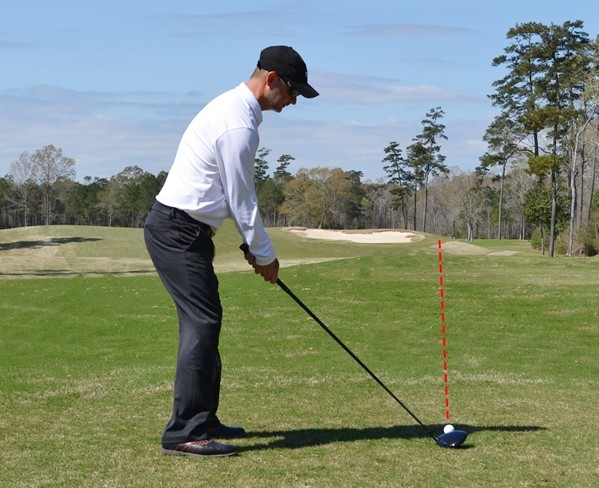
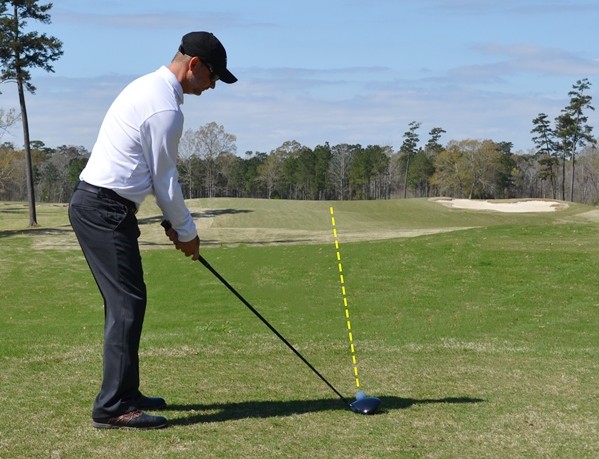
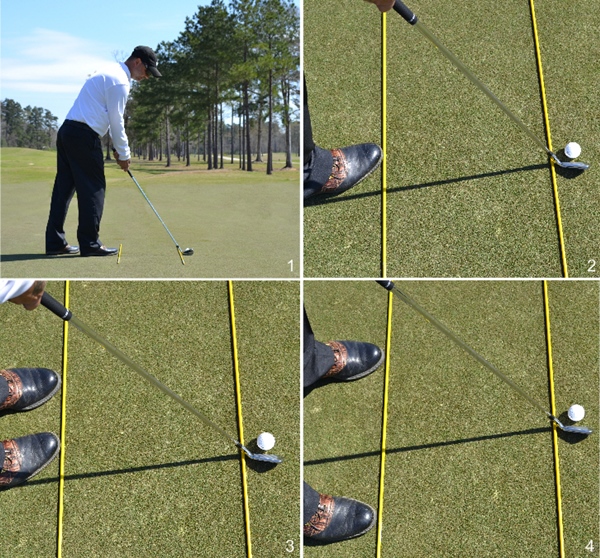
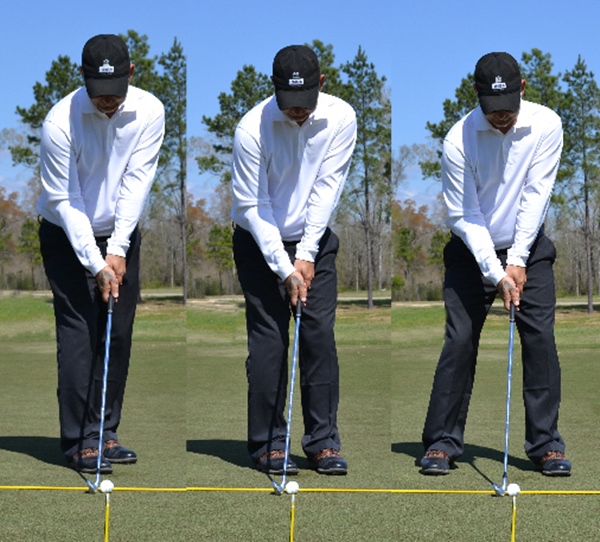
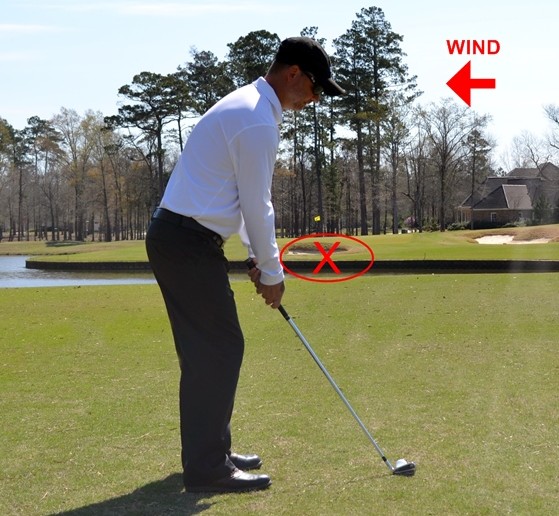
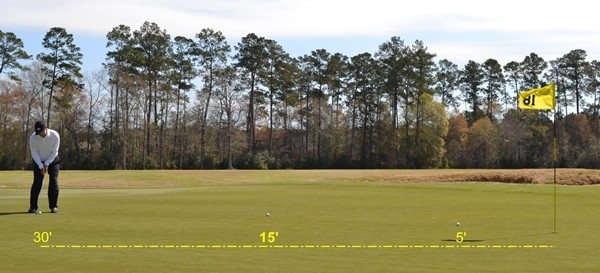















Jim
Apr 15, 2014 at 6:32 pm
Pacing off your putt will not only give you distance to the hole, but also will give you a feel for whether the putt is uphill or downhill or even sidehill when there is subtle grading to the green. You can do a lot of green reading with your feet.
Nick
Mar 31, 2014 at 5:02 pm
I’m stunned by how many decent golfers still club based on their “max yardage” and not their average yardage and as a result come up short over and over again. Hal and Michael here have it right. You may hit a 9 Iron 155 on the screws but you probably don’t hit more than half of your shots on the screws if you are on the internet reading golf advice columns about saving easy strokes.
I will add one piece of my own advice that can easily save strokes. Know if the pin is front, middle or back. I can’t believe how many guys will just ask for a yardage and swing away when I know they have no idea if that pin is front, middle or back. Michael hinted at this by saying you need to know the front of the green yardage. Flying the green can be penal and force the player to chip onto a green that slopes away from the player, so if your going to start pulling more club, keep in mind that your blue pins are where it can bite you.
Taylor Zalewski
Mar 25, 2014 at 12:06 pm
thats all we need is for people to be pacing off putts, having terrible golfers wasting more time only to blow it by the whole or leave it short by 10 feet. Better advice would be to play it to a 5 foot circle if you are more than 20 feet away. You have more opportunities for a 2 putt that way.
Michael Howes
Mar 26, 2014 at 3:25 pm
Try it out Taylor and I think that you will find it actually speeds up play and saves time. It is much easier to get in that 5 foot circle you mention, when golfers know how far away that circle is. You have to mark you ball anyway, so distance can be determined during this step.
Jay
Mar 24, 2014 at 10:22 pm
Right after learning how to aim: The best piece of advice I ever read, for faders, on the tee, stand to the right side of the tee and aim to the left side of the fairway. That tip alone will save 3-5 strokes.
Michael Howes
Mar 26, 2014 at 3:18 pm
Yes sir. Once a golfer gains the ability to aim correctly on the course, they can start aiming for their intended shape, as well as being able to accurately judge how the shot turned out.
trapp120
Mar 24, 2014 at 1:59 pm
#5 is the best tip for me. Not sure why I never thought to walk off putts. DOH!
trapp120
Mar 24, 2014 at 1:59 pm
and by #5 I mean #4…yeahhhhh.
Michael Howes
Mar 26, 2014 at 3:20 pm
This is a big help in developing proper distance & a good way to quickly adjust stroke length when playing different courses with different speed greens.
GolferX
Mar 22, 2014 at 11:50 pm
One question, I still don’t understand the emphasis on aiming if your trying to hit a fade or a draw? I know that you are ‘aiming at the target’ but aren’t you taking into account the shot shape? Okay, two questions…
Michael Howes
Mar 26, 2014 at 3:14 pm
Yes, take your consistent shot shape into account when aiming. The main thing to take note of is that most golfers have no idea where they are aiming when on the course & just setup square to the tee box angle.
Tal B Sure
Mar 22, 2014 at 9:24 am
Solid. Simple. Thoughtful.
Michael Howes
Mar 26, 2014 at 3:14 pm
Thx for reading & posting.
Carson
Mar 21, 2014 at 6:25 pm
No. 5 is gold! Great article, thanks for sharing Michael!
Michael Howes
Mar 21, 2014 at 11:00 pm
Thx for posting Carson.